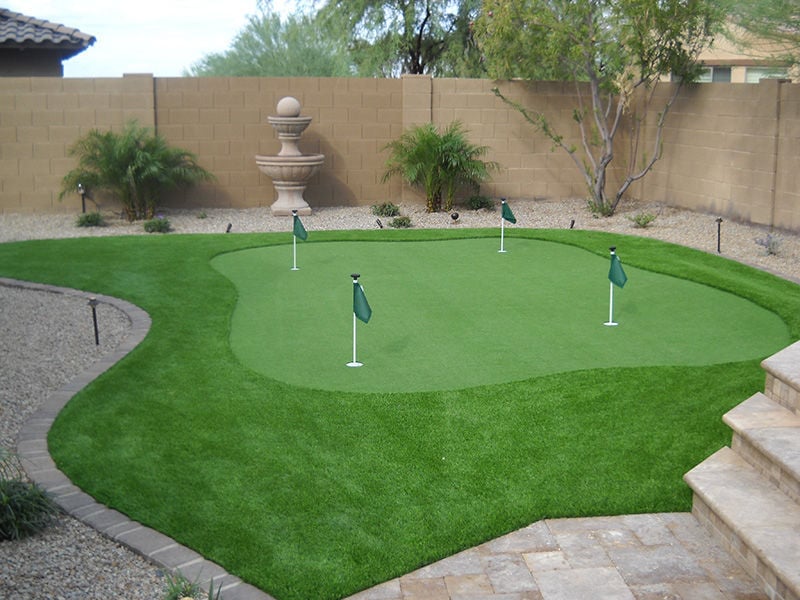Each year, thousands of Arizona residents email or call Rosie Romero’s radio show with questions about everything from preventing fires in their chimneys to getting rid of tree roots invading their sewer systems. His goal is to provide answers that suit the specific lifestyle wherever someone lives in Arizona.
QUESTION: I’m thinking of installing synthetic turf in my front yard and want to know some of the pros and cons.
ANSWER: As for benefits of artificial turf, you’ll never have to mow or fertilize it, but surprisingly enough, you may have to weed it because birds often drop seeds on turf. These products have improved in quality in recent years; the price per square foot ranges from about $2.50 to $10.50. Basically, the turf is composed of synthetic fibers threaded through a drainage layer of sand. Artificial turf can get very hot in our summer heat, but you can’t run irrigation pipes under it. You need to install sprinklers along the edges if you want to cool it down. You also want to rinse it with water periodically to clean it off. If you live in a neighborhood with a homeowner’s association, check to see if the association rules allow artificial turf.
Q: I just bought a refrigerator to keep inside my garage, but I’m worried because it can get really hot in there. Should I put a vent in the wall with a fan to suck the heat out? Is that a good idea?
A: You don’t want to install a vent fan because it can start sucking air out of the air-conditioned space in your house. One option is to put an evaporative cooler in your garage to provide some relief from the heat. I did that for about 15 years. It’s still a good option, but it will cost a lot less if you put a mini-split air conditioner in the garage. It keeps the garage 20 to 30 degrees cooler in summer and it can be used during the monsoon, which you can’t do with an evaporative cooler. A mini-split, however, can cost you a couple of thousand dollars. You also should be sure to insulate your garage door, walls and attic if they have not been done already. That would be a lot of money up front, but it will create more useable living space to your home.
Q: I put recessed can lighting in my kitchen where I have five little four-inch recessed spotlights. But I had to move some insulation around in the attic because the insulation was overheating where the lights were located. So how do I insulate now in the unprotected spots where I had to push the insulation out of the way?
A: Quite a few years ago, they created little fire-safe covers to put over recessed light fixtures to protect insulation from the heat. You can use that type of device on each light and you’ll be able to insulate in the attic on top of the covers. But don’t get too worried about how hot it’s getting in your attic. Only a small fraction of your air conditioning load is affected by the temperature in your attic. You’d be better off spending money shading your windows than you would be spending to ventilate your attic or over-insulate your attic.
Q: The soil in my yard is poor in quality. So I’m wondering if I can plant a grapevine in a pot and what size pot do I need?
A: A grapevine can do very well in a pot. You need a pot that is a minimum of 20-inches in diameter. But 24 to 30 inches would work as well. It also needs soil to a depth of 18 to 24 inches. An old wine barrel would be a good choice for a planter because then you’d probably never have to repot it.





